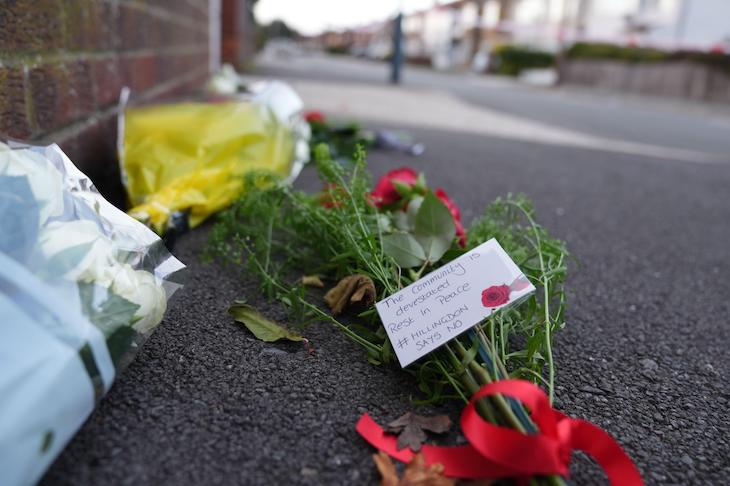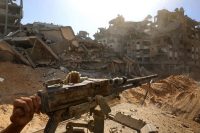In the wake of yet another rupture in the fragile ceasefire between Israel and Hamas, the region finds itself suspended in an unstable equilibrium – tense, volatile, but for now, deliberately held back from tipping into open war. On Tuesday, Hamas terrorists launched a coordinated double attack against Israeli troops operating inside the designated ‘yellow zone’ in Rafah – territory under clear IDF operational control. First came sniper fire, killing Master Sergeant (Res.) Yona Efraim Feldbaum. Minutes later, anti-tank missiles struck an engineering vehicle. The attack, both fatal and brazen, represented a clear violation of the ceasefire, exposing not only the presence of armed Hamas cells within IDF-controlled space but also a degree of coordination that belies any pretence of ‘difficulty’ in locating the bodies of Israeli hostages.
And yet, despite the gravity of this breach, and others like it, Israel’s response was, while forceful, ultimately bounded. Following political authorisation, the IDF launched a series of retaliatory strikes, targeting dozens of terror sites and eliminating 30 commanders within Hamas and affiliated groups. Judging from official statements, this action was intended not as an escalation but as a renewed enforcement of the existing ceasefire. The message was unmistakable: Israel struck hard but stopped short. The ceasefire has been declared intact, and hostilities are said to have ceased.
For the enemy, the logic is clear: limited Israeli response equals permission to continue
This tension, between the necessity of retribution and the logic of restraint, defines the current moment. Israeli military power is not in question. What is uncertain is whether the political leadership has chosen, for now, to absorb violations and casualties in order to avoid collapsing a ceasefire that still serves several strategic objectives.
The reasons for this restraint are not difficult to discern. Israel remains deeply invested in recovering the bodies of the 13 remaining hostages held in Gaza. Despite Hamas’s ongoing duplicity, including the cynical staging of a ‘body discovery’ for Red Cross representatives and the use of humanitarian corridors to locate weapons caches, Israel allowed aid trucks to continue into Gaza, having granted limited operational leeway to Hamas within IDF-controlled zones. These concessions are expressions of a grim strategic calculation: so long as there is even a marginal chance to retrieve more of the murdered captives, Jerusalem will defer a full-scale return to war.
The Americans, too, appear committed to prolonging the ceasefire. Washington’s preference for managed de-escalation aligns with its broader regional posture. President Trump’s statement was characteristic: ‘Hamas needs to behave. If they don’t behave, they will be destroyed, and they understand that.’ The message is twofold: on one hand, a window of opportunity; on the other, a threat of annihilation. It is a pattern Trump has used before, with Iran, with the Houthis in Yemen, and at various points with Hamas itself. He signals patience laced with menace: comply, or be crushed.
What remains opaque, however, is whether this balancing act between limited retaliation and delayed escalation is sustainable. Critics within Israel are already voicing alarm. They point out that Hamas is not merely violating the ceasefire but exploiting it, drawing Israeli blood while continuing to entrench itself. The IDF, in this view, is operating under rules of engagement that tie its hands. Sniper ambushes and anti-tank strikes are met with retaliatory airstrikes, but no shift in the strategic posture. For the enemy, the logic is clear: limited Israeli response equals permission to continue.
The concern is not hypothetical. To Hamas and other Palestinian factions, the memory of Israeli withdrawals – south Lebanon in 2000, Gaza in 2005 – still signals that sustained armed pressure can yield strategic results. If the current pattern holds, with Israeli casualties followed by calibrated retaliation but no broader shift, then the message to Hamas may be dangerously familiar: keep pushing, keep bleeding them, and they will leave.
The Israeli government must therefore decide whether it is managing a temporary tactic or sleepwalking into a strategic failure. It cannot indefinitely permit violations, conceal battlefield losses, and rely on symbolic strikes to project deterrence. If this becomes the pattern, deterrence will degrade. And if deterrence collapses, the war will resume, but from a worse position.
This is the underlying uncertainty. As of 10 a.m. local time this morning, the current ceasefire has resumed, but it is fraught with fragility and calculation. Israel, Hamas, and the United States all appear to want it to hold, for now. Its future, though, depends not on words but on outcomes. If Hamas continues to violate the terms and refuses to release further hostage bodies, the logic sustaining restraint may collapse. If Trump and Netanyahu have already agreed to a conditional posture – limited retaliation today in exchange for legitimacy to strike hard tomorrow – then what we are witnessing may be the prelude, not the resolution.
The question is no longer whether the ceasefire can hold. It has, just about. The question is how long it can last – and whether it is simply a pause before the inevitable reckoning.








Comments